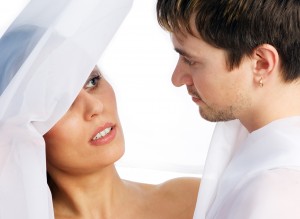
We’ve always been told “Don’t judge a book by its cover“, but in fact research shows that, that is exactly what our brains are programmed to do.
LiveScience comments on new findings that identify which facial features influence how others first perceive a person. Are you perceived as trustworthy, attractive, dominant? Scientists purport that these judgments are formed with in milliseconds of seeing a person’s face.
This kind of research can help determine what facial expressions would help give the best first impressions.
Study co-author Tom Hartley, a cognitive neuroscientist and psychologist at the University of York in England, noted that previous research found that the many different judgments characterizing first impressions tend to fall along three underlying dimensions. One is approachability — do they want to help me or to harm me? The next is dominance — can they help or harm me? The last is youthful-attractiveness — perhaps representing whether they would be a good romantic partner or rival.
Unfortunately, many people take their judgments from first impressions and run with them whether they are true reflections of the person’s character or not. Even though we know that we shouldn’t judge a book by its cover or a person by their face, we all have.
Hartley pointed out that it is very useful to know how your being judged (accurately and not) by your appearance especially in instances of court cases, or elections.
For this study, Hartley and his colleagues had participants rate their first impression of 1,000 photographs taken from the internet. They rated them on traits such as attractiveness, trustworthiness, and dominance. The faces used were further broken down by the researchers into 65 features from jaw and mouth shape to eyebrow shape.
An artificial intelligence software was used to analyze these features and their first impression ratings. “Our results suggest that some of the features that are associated with first impressions are linked to changeable properties of the face or setting that are specific to a given image.“ Hartley went on to note that
“We know that people process faces of other ethnicities differently from their own — this might be because of cultural stereotypes, but also more subtle things such as the level of experience we have with different kinds of variation in the face. As it’s not practical to incorporate faces and judges from every possible geographic, cultural and ethnic background, we instead try to keep these factors fixed by focusing on one ethnic and cultural group at a time. We can then investigate the ways in which different groups rely on different facial features and perhaps reach different social judgments in a step-by-step way.“
Mouth shape and area were linked to approachability; a smiling expression is a key component of an impression of approachability. Attractiveness was judged by the eye shape and area; large eyes were closely linked to a youthful appearance. Dominance had features indicating a masculine face shape, such as eyebrow height, cheekbones, as well as color and texture differences that may relate to either masculinity or a healthy or tanned overall appearance.
 “We discovered that fine-grained patterns of neural activity within the orbitofrontal cortex, an area of the brain associated with emotional processing, act as a neural code which captures an individual’s subjective feeling,”
“We discovered that fine-grained patterns of neural activity within the orbitofrontal cortex, an area of the brain associated with emotional processing, act as a neural code which captures an individual’s subjective feeling,”